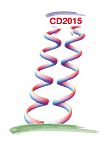Speaker
Harald W. Griesshammer
(George Washington University, Washington)
Description
The past few years have witnessed a renewed emphasis of the need to quantify residual theoretical uncertainties [1,2]. Ideally, “double-blind” calculations would assess them based on input and method, and not by comparison to data. This is particularly important if data is absent or its consistency needs to be checked. Effective Field Theories promise a well-defined scheme to provide such reproducible, objective, quantitative error estimates. While straightforward in a perturbative EFT like the purely mesonic or one-baryon sector of χEFT, how can one validate the expansion in a non-perturbative EFT? This is a particularly nagging question for few-nucleon systems, where a fully consistent chiral EFT is still under development since the NN interaction is non-perturbative, leading to heated discussions which of the proposed power countings is consistent. A reliable uncertainty estimate is not just a cornerstone of the Effective Field Theory methodology. To be able to falsify predictions of a theory is central to the Scientific Method. This talk proposes a means to check the internal consistency of a non-perturbative expansion on a semi-quantitative level. One can indeed quantify the consistency of an EFT from the dependence of observables O(k; Λ) at low momentum k on the cutoff Λ employed in numerical calculations [2]. This way, one actually turns into an advantage the annoying fact that most nonperturbative systems do not allow for closed-form calculations. The power-counting in the small, dimension-less quantity Q ∝ k of an EFT predicts (up to logarithmic corrections)
1 − O(k; Λ1)/O(k; Λ2) ∝ ( k/Λ_EFT)^{n+1} (1)
for a calculation at order Qn , where ¯ Λ_EFT is the typical high-energy scale at which the
EFT description breaks down [3]. The slope of a double-logarithmic plot of a suitable quantity against k reveals thus the order of accuracy n and an estimate of Λ_EFT. In contradistinction to a method proposed by Lepage [4] , this approach does not compare to data to assess uncertainties. The method is not the solution to all problems but another arrow in the quiver. Its advantages and shortcomings are discussed with various examples, including some from recent literature.
References
1. Editorial, Phys. Rev. A83 (2011) 040001.
2. J. Phys. G42 (issue 3, Feb 2015): Special Focus Issue “Enhancing the Interaction between Nuclear Experiment and Theory through Information and Statistics”.
3. H. W. Grießhammer, Nucl. Phys. A744 (2004) 192, and forthcoming.
4. G. P. Lepage, nucl-th/9706029.
Primary author
Harald W. Griesshammer
(George Washington University, Washington)

